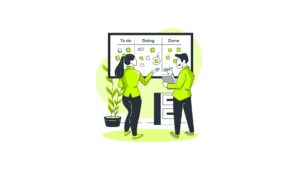Accept Cookies & Privacy Policy?
We use cookies to ensure that we give you the best experience on our website. If you continue to use this site we will assume that you accept and understand our Privacy Policy, and our Terms of Service.
Microservices testing is a combined effort of multiple QA activities that ensure each microservice is functioning as intended with stable performance, and its system shortcomings fail to result in severe functional disruptions of the entire software, assuring that all microservices seamlessly function as a single application.
Full-scale microservices testing is deployed to ensure the quality of software systems.
Microservices testing categories include
Microservices testing team members: Include a QA manager, manual & test automation engineers, and a test automation architect. A full scope of microservices testing activities ranges from high-end consultancy to providing customizable professional microservices testing services to deliver maximum quality of customers’ software.
Microservices testing setup plan
A microservices testing setup plan depends greatly on the SDLC stage of the microservices project and the software requirements specifications.
1. Microservices testing process designing
Duration: Almost 1 week
Best practices: As every microservice is deployed independently, it integrates a test engineer for each cross-functional microservice team with collaboration scenarios between the respective test engineers for mutual coordination and prioritization of the combined testing activities.
2. Microservices testing preparation
Preparation for the microservices testing process is based on the sourcing model
Integration, component, and contract testing
The test teams must execute:
Developing Integration test cases (validating all communication pathways and mutual interactions between components within each microservice).
Component test cases (checking on a microservice behavior with the help of API mocking tools).
Contract test cases (checking on the real communication between microservices).
These testing types comprise the majority of microservices test suites.
Performance testing
Includes load, stress, endurance, and scalability testing at both:
Regression testing
Avoid application breakdowns on introducing new services or iterations in API evolution, a test engineer within each microservices team attests to their microservice interactions with its dependencies.
Duration: 2 weeks
Launch the microservices testing process by
Involves analysis of the microservices application architecture and requirements, and the existing QA process.
Cost optimization
Optimizes testing costs to implement effective methodology, optimal resource utilization, and risk-based approach to testing.
Reduced testing time
Optimize test time, overcome all the bottlenecks, and decide on automation testing shares
Domain expertise
Ensure effective collaboration with the product’s business team.
The developers choose microservices design for its modular properties, the key benefactor for deploying Microservices testing, to easily develop and test than the usually complex software architecture. Overcoming challenges while the application is continuously evolving which makes extensive functional testing predominant.
The five most significant reasons for Microservices testing are
1. Ensuring reliability and functionality
2. Detecting integration issues
3. Ensuring performance and scalability
4. Improving efficiency and speed
5. Supporting continuous delivery and deployment
What happens when you don’t do Microservices Testing?
When considering A Large Number Of Interchanging Components, Microservices Design Has Numerous Points Of Failure.
The impact of No or Unplanned Microservices testing usually results in the following.
A little or insufficient testing of microservices can also adversely impact
1. Reliability
2. Stability
3. Performance
4. User experience of the system
as Microservice architecture has numerous points of failures
Testing a microservices architecture differs from testing typical monolithic systems. TF has a unique way of testing microservices where we plan our test strategy which addresses some important factors while testing a microservices design.

So picture this: You’re the air traffic controller of a chaotic airport where the planes (developers) don’t always listen, the passengers (stakeholders) want to change destinations mid-flight, and the weather (unforeseen blockers) is always unpredictable.

Imagine a world where testing is no longer a bottleneck. No more endless cycles of manual effort, no more missed defects due to human fatigue, and no more panic at the eleventh hour before a major ERP rollout.

Imagine a world where testing is no longer a bottleneck. No more endless cycles of manual effort, no more missed defects due to human fatigue, and no more panic at the eleventh hour before a major ERP rollout.

Let’s talk about GenAI and testing in 2025—the wild west of technology where machines are not just smart, but scary smart. GenAI (that’s Generative AI for the uninitiated) is running the show everywhere. It’s writing poetry, designing ads, debugging code, and probably plotting to take over my job as I write this blog.

Ah, 2024—you’ve been a year, haven’t you? For us at Thought Frameworks, this year wasn’t just about running the usual QA/QE playbook. Nope, we went full throttle into the future—tinkering, testing, and transforming everything from ERP systems to the ever-evolving world of SAP, GenAI, and security testing.

So, you’re deep in the ERP trenches and trying to figure out the best approach between NetSuite and Oracle EBS. You’re certainly not alone! We can help break down how these two ERP giants stack up when it comes to ensuring systems run like clockwork but without the overload.
Accept Cookies & Privacy Policy?
We use cookies to ensure that we give you the best experience on our website. If you continue to use this site we will assume that you accept and understand our Privacy Policy, and our Terms of Service.
| Cookie | Duration | Description |
|---|---|---|
| cookielawinfo-checkbox-analytics | 11 months | This cookie is set by GDPR Cookie Consent plugin. The cookie is used to store the user consent for the cookies in the category "Analytics". |
| cookielawinfo-checkbox-functional | 11 months | The cookie is set by GDPR cookie consent to record the user consent for the cookies in the category "Functional". |
| cookielawinfo-checkbox-necessary | 11 months | This cookie is set by GDPR Cookie Consent plugin. The cookies is used to store the user consent for the cookies in the category "Necessary". |
| cookielawinfo-checkbox-others | 11 months | This cookie is set by GDPR Cookie Consent plugin. The cookie is used to store the user consent for the cookies in the category "Other. |
| cookielawinfo-checkbox-performance | 11 months | This cookie is set by GDPR Cookie Consent plugin. The cookie is used to store the user consent for the cookies in the category "Performance". |
| viewed_cookie_policy | 11 months | The cookie is set by the GDPR Cookie Consent plugin and is used to store whether or not user has consented to the use of cookies. It does not store any personal data. |
Ready for a Quality Software?
Let’s Dig Deep Into Your Thought!